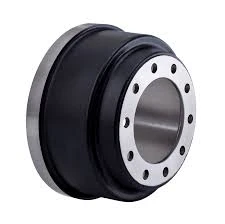
-
 Afrikaans
Afrikaans -
 Albanian
Albanian -
 Amharic
Amharic -
 Arabic
Arabic -
 Armenian
Armenian -
 Azerbaijani
Azerbaijani -
 Basque
Basque -
 Belarusian
Belarusian -
 Bengali
Bengali -
 Bosnian
Bosnian -
 Bulgarian
Bulgarian -
 Catalan
Catalan -
 Cebuano
Cebuano -
 Corsican
Corsican -
 Croatian
Croatian -
 Czech
Czech -
 Danish
Danish -
 Dutch
Dutch -
 English
English -
 Esperanto
Esperanto -
 Estonian
Estonian -
 Finnish
Finnish -
 French
French -
 Frisian
Frisian -
 Galician
Galician -
 Georgian
Georgian -
 German
German -
 Greek
Greek -
 Gujarati
Gujarati -
 Haitian Creole
Haitian Creole -
 hausa
hausa -
 hawaiian
hawaiian -
 Hebrew
Hebrew -
 Hindi
Hindi -
 Miao
Miao -
 Hungarian
Hungarian -
 Icelandic
Icelandic -
 igbo
igbo -
 Indonesian
Indonesian -
 irish
irish -
 Italian
Italian -
 Japanese
Japanese -
 Javanese
Javanese -
 Kannada
Kannada -
 kazakh
kazakh -
 Khmer
Khmer -
 Rwandese
Rwandese -
 Korean
Korean -
 Kurdish
Kurdish -
 Kyrgyz
Kyrgyz -
 Lao
Lao -
 Latin
Latin -
 Latvian
Latvian -
 Lithuanian
Lithuanian -
 Luxembourgish
Luxembourgish -
 Macedonian
Macedonian -
 Malgashi
Malgashi -
 Malay
Malay -
 Malayalam
Malayalam -
 Maltese
Maltese -
 Maori
Maori -
 Marathi
Marathi -
 Mongolian
Mongolian -
 Myanmar
Myanmar -
 Nepali
Nepali -
 Norwegian
Norwegian -
 Norwegian
Norwegian -
 Occitan
Occitan -
 Pashto
Pashto -
 Persian
Persian -
 Polish
Polish -
 Portuguese
Portuguese -
 Punjabi
Punjabi -
 Romanian
Romanian -
 Russian
Russian -
 Samoan
Samoan -
 Scottish Gaelic
Scottish Gaelic -
 Serbian
Serbian -
 Sesotho
Sesotho -
 Shona
Shona -
 Sindhi
Sindhi -
 Sinhala
Sinhala -
 Slovak
Slovak -
 Slovenian
Slovenian -
 Somali
Somali -
 Spanish
Spanish -
 Sundanese
Sundanese -
 Swahili
Swahili -
 Swedish
Swedish -
 Tagalog
Tagalog -
 Tajik
Tajik -
 Tamil
Tamil -
 Tatar
Tatar -
 Telugu
Telugu -
 Thai
Thai -
 Turkish
Turkish -
 Turkmen
Turkmen -
 Ukrainian
Ukrainian -
 Urdu
Urdu -
 Uighur
Uighur -
 Uzbek
Uzbek -
 Vietnamese
Vietnamese -
 Welsh
Welsh -
 Bantu
Bantu -
 Yiddish
Yiddish -
 Yoruba
Yoruba -
 Zulu
Zulu
hyundai accent drum brakes
The Hyundai Accent and Its Drum Brakes An Overview
The Hyundai Accent has been a popular subcompact car since its introduction, well-known for its reliability, fuel efficiency, and affordability. However, one aspect that often gets overlooked is its braking system, particularly the drum brakes, which are utilized in the rear of several Accent models. Understanding the functionality, advantages, and maintenance requirements of drum brakes can help you better appreciate the performance of the Hyundai Accent.
Understanding Drum Brakes
Drum brakes are a type of braking system that operates using friction created by brake shoes against a spinning drum. When the brake pedal is pressed, hydraulic pressure forces the shoes against the inside of the drum, creating the necessary friction to slow down or stop the vehicle. Unlike disc brakes, which are commonly found on the front wheels and operate with a rotor and caliper system, drum brakes are usually less expensive to manufacture and can be quite effective for lighter vehicles and at the rear wheels.
Advantages of Drum Brakes in the Hyundai Accent
1. Cost-Effectiveness One of the primary benefits of drum brakes is their lower production cost. For budget-conscious consumers, such as those who typically purchase a Hyundai Accent, this translates into a lower purchase price and reduced maintenance expenses.
2. Sufficient Performance for Subcompact Vehicles While disc brakes offer superior stopping power, drum brakes can provide adequate performance for smaller, lighter vehicles. The Hyundai Accent, designed for city and suburban driving rather than high-performance racing, benefits from the efficiency of drum brakes without sacrificing safety.
3. Better Performance in Wet Conditions Drum brakes are less susceptible to water ingress compared to disc brakes. This feature can contribute to more reliable performance during inclement weather, often beneficial for drivers in regions with heavy rain or snow.
hyundai accent drum brakes

4. Increased Longevity Generally, drum brakes tend to wear more slowly than their disc counterparts. This characteristic can lead to longer intervals between necessary brake maintenance, providing an advantage for the cost-conscious owners of a Hyundai Accent.
Maintenance Considerations
While drum brakes have their advantages, they are not without their challenges. Regular maintenance is essential to ensure optimal performance and longevity
- Brake Adjustment Drum brakes require periodic adjustments to maintain proper function. Unlike disc brakes, which automatically self-adjust, drum brakes can fall out of alignment over time. - Inspection and Cleaning It's crucial to inspect the brake shoes, drums, and springs for wear. Dirt and debris can accumulate in the drum housing, potentially leading to diminished braking performance. Regular cleaning can help avoid these issues.
- Replacement Parts Eventually, the brake shoes and drums will need to be replaced. Drivers should pay attention to any signs of noise or reduced braking efficacy to determine when replacement is necessary.
- Professional Servicing While some vehicle owners might be inclined to perform brake work themselves, drum brakes can be complex. Seeking professional help ensures that the installation and adjustments are done correctly and safely.
Conclusion
The Hyundai Accent's use of drum brakes in its rear axle is a testament to the vehicle's design prioritizing affordability and efficiency. While drum brakes may not deliver the same performance as disc brakes, they provide adequate stopping power for the Accent's target market. By understanding how drum brakes work, their advantages, and essential maintenance requirements, Hyundai Accent owners can ensure their vehicles remain safe, reliable, and budget-friendly for years to come.
-
What Are Drum BrakesNewsJul.07,2025
-
Understanding Brake Drum MaterialNewsJul.07,2025
-
Semi-Trailer Brake Drum: A Key Component for Extreme Loads and Long-Distance TransportNewsJul.07,2025
-
Drum Brake Pads for SaleNewsJul.07,2025
-
Brake Drums for SaleNewsJul.07,2025
-
Brake Drum ManufacturerNewsJul.07,2025
-
Aluminum Brake Drums: The Future of High-Performance CarsNewsJul.07,2025
